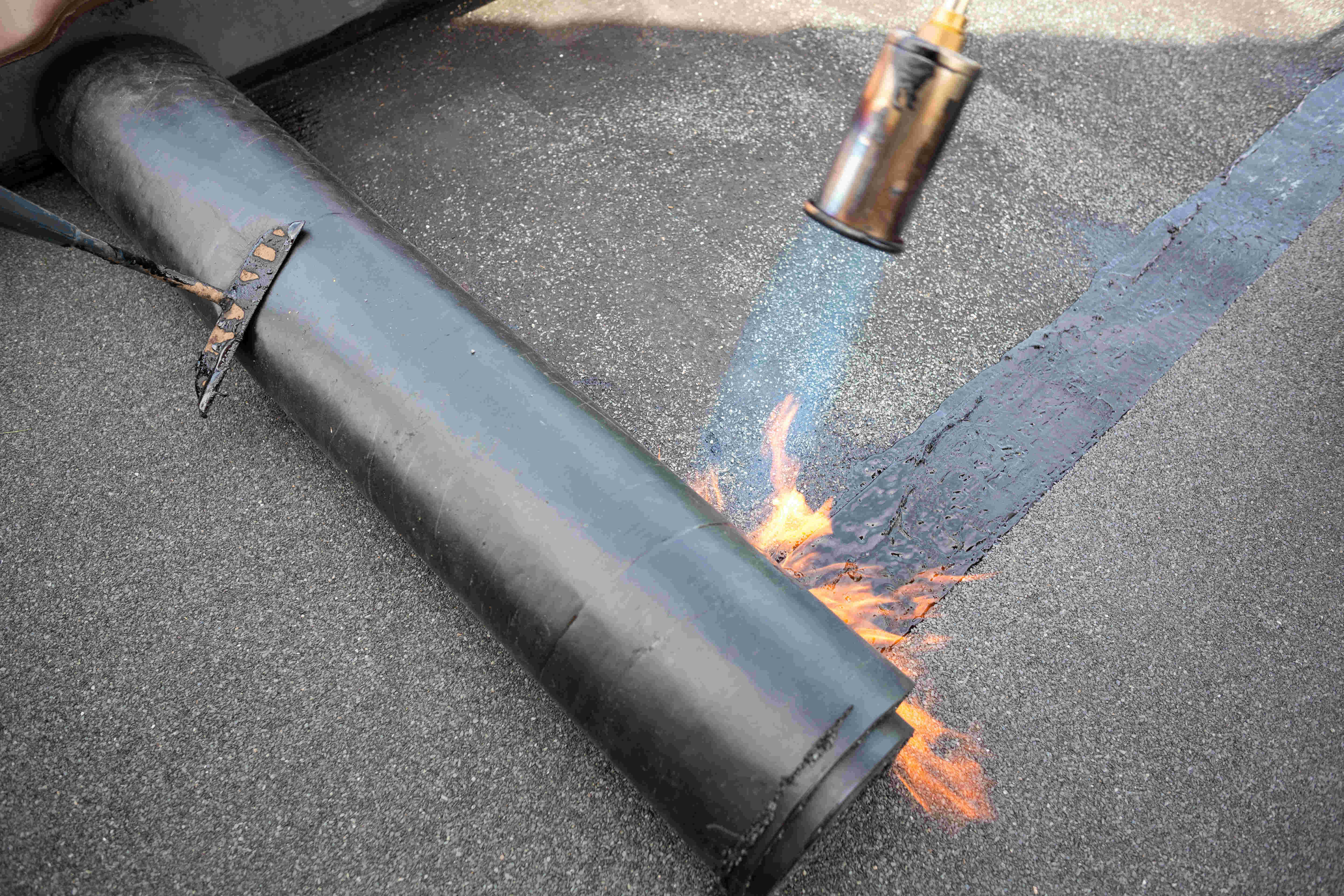Removing VOCs during the production of bitumen roofing
Bitumen is widely used as a roofing material, especially for flat roofs. Made from crude oil, it is valued for its weather-proof sealant properties. However, when bitumen is heated to liquid form during the production process it releases volatile organic compounds (VOC) such as hydrocarbons, which can create an odour nuisance for those living nearby.
The problem
This major company produces bitumen roofing at its plant in Germany. It has a permit to emit VOCs up to a concentration of 20 mgC/m³ of air.
In the production hall, bitumen is heated to 160-200˚C, then poured to make sheets. Extraction hoods suck out air containing bitumen fumes for treatment.
The company had installed a wet scrubber to purify the emissions. However, the hydrocarbons in bitumen are not water soluble, and attempts to aid their removal by adding certain chemical agents were only partially successful.
The company discovered DESOTEC at the German environmental technology trade fair IFAT, and asked us whether our technology might prove effective for their situation. After discussions, we arranged to carry out a pilot project.


The solution
We installed a small filter, the AIRCON 200, on an airstream of 100 m3/h. The total flow rate from the production hall is 20 000 to 40 000 m3/h, so if the pilot proved successful, we would need to scale up by a factor of 200 to 400.
We employed a two-step process to measure the outcome. Firstly, by a simple smell test of the treated air at the outlet. Secondly, by using a flame ionisation detector (FID) already installed by the client.
As expected, we found that the fresh activated carbon in our filters adsorbed all the compounds at the beginning of the pilot project. As the filter beds became more saturated, we began to detect low concentrations of hydrocarbonsin the treated flow.
From this, we could ascertain how long each filter would last; and analyse the spent carbon to see how much pollution it was adsorbing. We calculated that our large standard filter, the AIRCON V-XL, would be appropriate as a long-term solution.
However, the client wanted to be certain there would be no breakthrough, so we decided to place a second filter in series as back-up. This also means that the first filter can be fully exhausted before it is exchanged, lowering carbon consumption and operating costs.
During the development of the project, the client decided to include a further emissions stream in the set-up. The final design, therefore, was for two AIRCON V-XL filters in series.
This factory varies its production level to meet demand, increasing hours in the spring and summer, reducing them in the autumn, and shutting down completely for a period in the winter. Activated carbon is ideal for discontinuous production, as it can be simply put on hold with no standby costs until production restarts.
The results
The full-scale set-up began operation in early spring 2020. So far, there has been no smell after treatment, and no sign of any carbon breakthrough, proving that the system is working effectively.
This is a major project, and the pilot, planning, design and engineering stages took a total of three years. Our scope of supply also included duct work, ventilators and the electrical control system – a set-up that might otherwise require five or six companies to install. For smaller projects, our plug-and-play mobile filters can be fitted within just a few weeks.
The plant’s on-site maintenance team are pleased that the exchange of filtersis handled by DESOTEC technicians, and that the two-filter system means production does not need to shut down during this operation.
Contact our experts
DESOTEC's activated carbon filtration solutions are an effective way to treat emissions, whether for small or large-scale applications. To find out how our solutions could be applied at your bitumen production plant, contact our team of engineers today.
Contact our expertsContact our experts
DESOTEC's activated carbon filtration solutions are an effective way to treat emissions, whether for small or large-scale applications. To find out how our solutions could be applied at your bitumen production plant, contact our team of engineers today.
Contact our experts-
Air & gas purification
Our sustainable filtration solutions ensure air purification, odour control, and high quality process gases such as biogas and biomethane. -
Our unique service
Our closed-loop, full-service model is as unique as your business needs. We’ll define the right filtration setup and safely recycle filtration waste, making it easy to go green. -
Your sustainability journey
We care about protecting our air, water and soil for future generations, just like you. Our filtration solutions help you meet environmental standards, reducing your carbon footprint.


